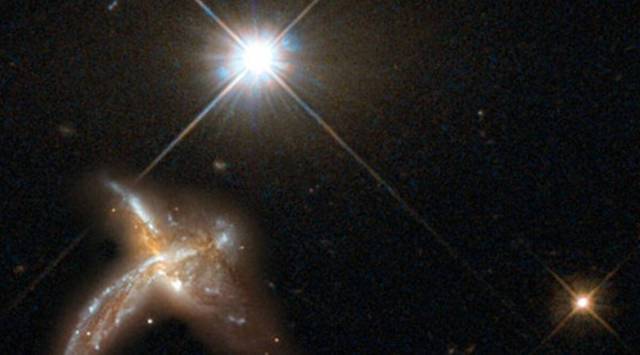Scientists discuss need for space-based telescopes to accomplish astronomical phenomena
There may be thousands of ground-based telescopes operating from remote and light-pollution free locations but they suffer from atmospheric absorption, the scientists said.
 The course registration can be done via JVP mobile app. For schedule and more details about the course, interested candidates can visit www.jvppune.in
The course registration can be done via JVP mobile app. For schedule and more details about the course, interested candidates can visit www.jvppune.inEven though ground-based telescopes have much to offer, studies of certain astronomical phenomena can be accomplished only by using space-based telescopes, said Prof Annapurni Subramaniam, director of Indian Institute of Astrophysics (IIA), Bengaluru. She was delivering a talk on ‘Astronomy from Space’ during the 21st National Space Symposium, (NSS) jointly organised by the Indian Space Research Organisation (ISRO) and Indian Institute of Science Education and Research (IISER), Kolkata.
“Certain astronomical phenomena require data observations obtained from multiple wavelengths, which is possible only using space-based telescopes. Increasingly, scientists and engineers are turning to space as new frontiers of advanced telescopes,” said Subramaniam.
India launched its first space-based observatory, the Astrosat, in 2015 and the facility continues to remain operational till date. The ISRO is continuing to hold discussions with the scientific community and evaluate possibilities for a successor to Astrosat, S Somanath, chairman of ISRO, informed earlier this week. In 2022, India will launch its maiden mission to the Sun, the Aditya L1, final stage testing for which is currently underway, the ISRO chairman said.
Since the goal of undertaking astronomical studies is to obtain better and sharper images and be able to look deeper and cover wider areas into the Universe, space-based telescopes are the future. The recently launched James Webb Space Telescope will be a game-changer in the coming years, the scientists noted.
There may be thousands of ground-based telescopes operating from remote and light-pollution free locations, but they suffer from atmospheric absorption.
Explaining the need for space-based telescopes, the IIA director said, “Due to atmospheric absorption, certain parts of wavelengths cannot be observed and this is a challenge using ground-based telescopes. Secondly, even though some ground-based telescopes use adaptive optics, smaller telescopes do not have this facility, thus the quality of the images suffer.”
She said, “Unlike ground-based telescopes that can be built in large sizes with lesser capital investments, are easier to maintain, can be upgraded from time-to-time, run a lower risk of malfunction or destruction, ideating space-based telescopes require advanced sensors and technology, electronics and high investments.”
Among the future space-based missions planned with ISRO, the senior IIA scientist informed that work is presently underway in the planned Indian Spectroscopic and Imaging Space Telescope (INSIST), which will fill the gap areas in the ultra-violet band along with offering high resolution and next-generation sensitivity. Work is also in progress for the dedicated mission to study Exoplanets, wherein a 1.5-metre telescope will be positioned at the Lagrange’s point (L2).







